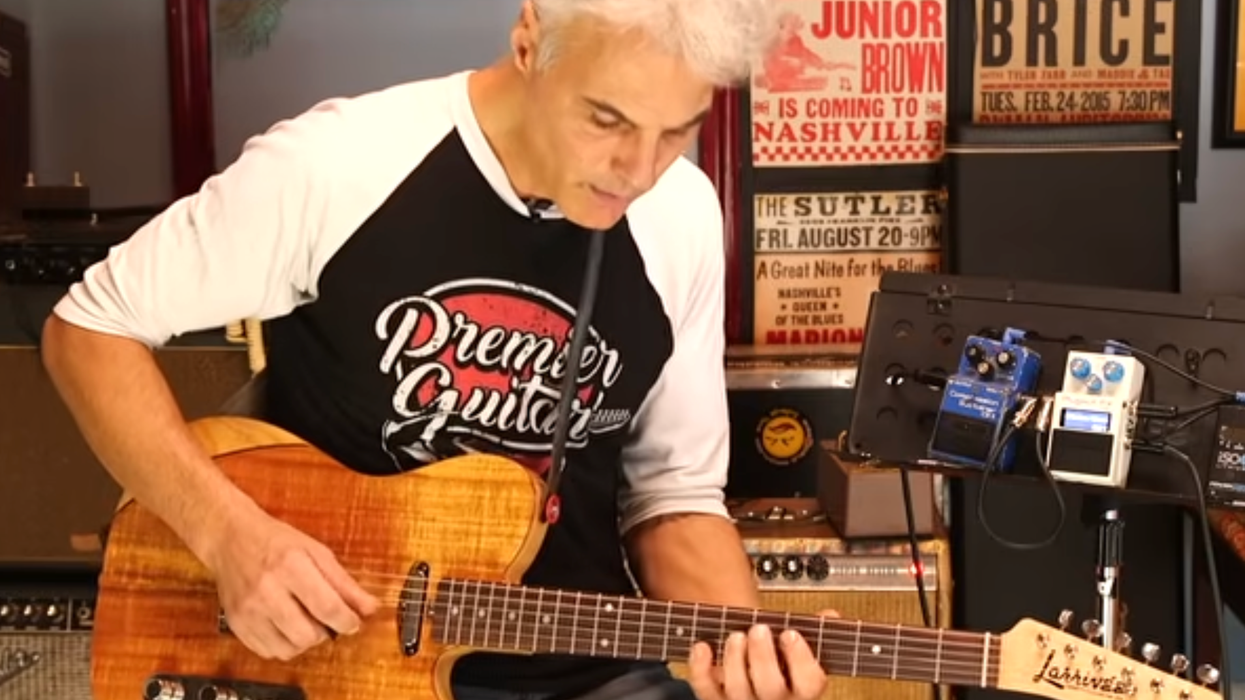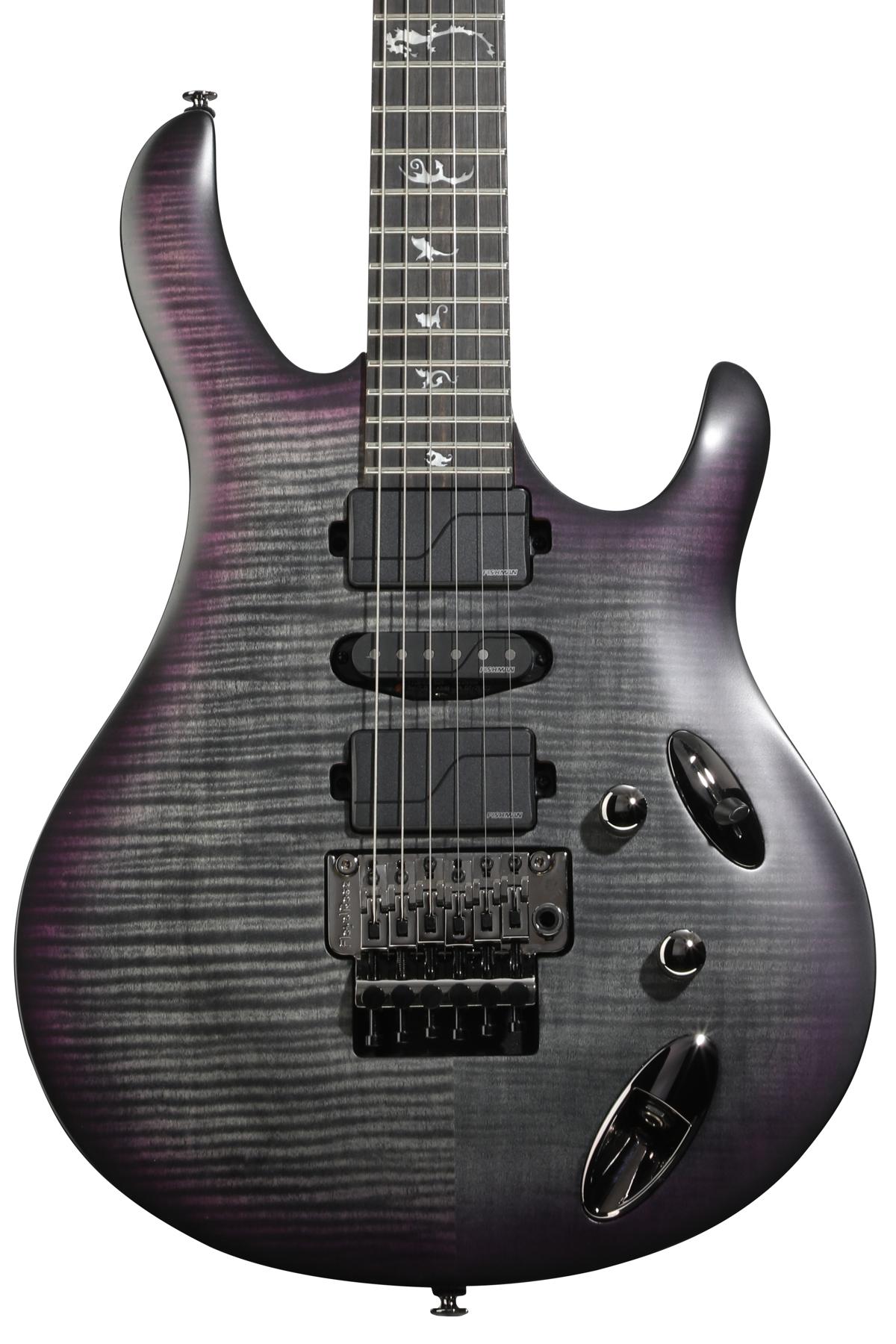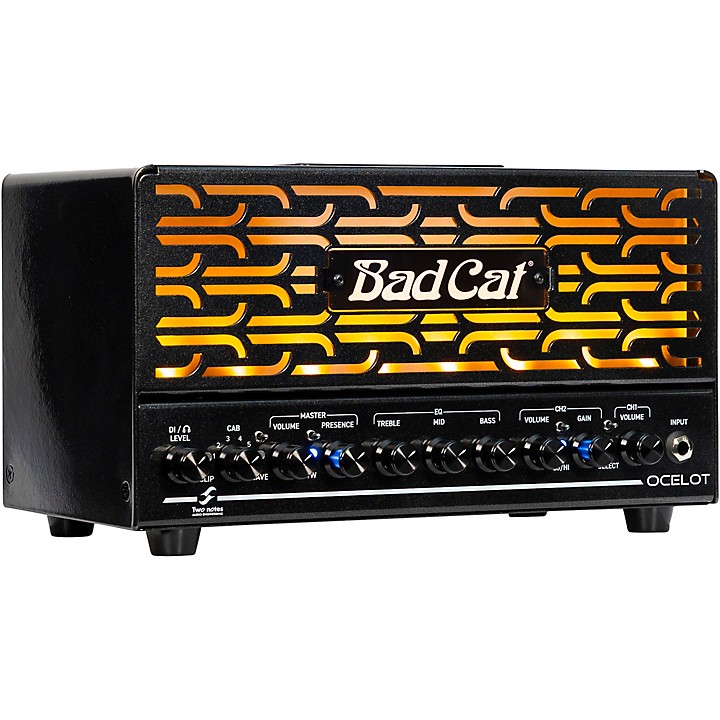All clips played through a 1969 Fender Super Bassman into an Avatar 2x12 loaded with Celestion V30s.
Guitarists prone to gear lust can quickly lose themselves (and perhaps their savings) perusing the wide ranging product catalog of products by Demeter Amplification. Their history, which spans more than 30 years, is marked by several classic products including their iconic VTMP-2 Tube Microphone Preamp and an assortment of custom-order preamps for guitarists and bassists. In 2005 they released the critically acclaimed FUZ-1 Fuzzulator. Now they’ve introduced the Fuzzy Octavulator, which takes the much-loved Fuzzulator circuit and adds an independent, vintage-sounding octave-up circuit that ranges from authentic Hendrix-esque Octavia tones and beyond.
Green Thing
The compact Fuzzy Octavulator is powered via a 9V battery or a 9V DC tip-positive mini-plug. Its neon green painted metal chassis, which would be pretty hard to miss on a pedal board in the worst light, rests on rubber feet and is lettered in black silkscreen. Two lights (orange for Fuzz, blue for Octave) indicate the status of the independent, true-bypassed circuits and are toggled by independent footswitches. The Fuzz circuit is on the left side of the pedal. Its features include three rotary controls for Fuzz, Tone and Volume, and a mini-toggle for Tight or Loose operation. There is also a master gain control for the Fuzz that can be adjusted inside the unit. The Octave circuit has no controls—it’s either on or off. An internal trim pot labeled Balance ensures the Octave effect will produce an symmetrical octave waveform. The trim pot was not perfectly aligned with the access hole when I received the pedal, but opening up the pedal I was able to gently push the circuit board slightly and center the pot.
Inside the Octavulator I was pleased to find an extremely tidy wiring job connecting hand-soldered components. I also noticed extensive use of rubber shrink wrapping to ensure the prevention of short-circuiting of critical components. A 9V battery fit snuggly in place and no components rattled inside once the unit was closed and ready to rock. Overall, the components and construction are to Demeter’s usual high standards.
Fuzzed Out
Putting the Octavulator between my Gibson SG and late ’60s silverface Fender Twin Reverb I engaged the Fuzz circuit, set the controls (Fuzz, Tone, Volume) at noon, and the toggle to Tight. I was welcomed by a mid-range rich, slightly compressed, classic rock overdrive that instantly prompted a run of Jimmy Page riffs. The high end was little fuzzy but controlled in a way that enabled excellent pick attack dynamics and percussive but left note decays free from lingering distortion. Regardless of where you dial in the Tone knob, the Octavulator tends to have a big bottom end when the fuzz circuit is engaged.
There is a touch of intentional grime in this circuit that pays tribute to the wilder nature of some of the earliest octavers, and remarkably, Demeter gets that highly sought-after dirt in the signal without the typical noise that you’d expect.
It only took a few seconds of riffing in this initial setting to realize what a well-engineered fuzz this is. While it’s not a fuzz that takes you to over-the-top noise rock realms, it’s fantastic for big-to-dirty sounds ranging from hard rock overdrive to fuzzy distortion. Rolling up the Fuzz control produces dirty Muff-like distortion. And even at extreme settings the overall sound has a noteworthy balance—never abrasive in the highs or too noisy. Players who prefer a darker fuzz will find the Tone control exceptionally effective. The pedal also cleaned up nicely when I rolled back the output of my humbuckers.
The Loose/Tight mini-toggle on the side of the unit switches the clipping devices between germanium Diodes (Loose) and LEDs (Tight), each device with its own fuzz characteristics. Switching to Tight gives higher output, a boosted high-end and is slightly more compressed and modern sounding. On the other hand, Loose mode is dark and punchy, and more vintage-sounding. Even if you have no need for an Octave function the Fuzz circuit alone makes this pedal a monster.
Octave Up
The Octave circuit is straightforward but exceptionally well executed. I started by disengaging the Fuzz circuit with the Gibson in hand. The Octave circuit is not just a simple, single octave-up mixed 50/50 alongside your dry signal. There is a touch of intentional grime in this circuit that pays tribute to the wilder nature of some of the earliest octavers, and remarkably, Demeter gets that highly sought-after dirt in the signal without the typical noise that you’d expect. Even with the typically noisier single coils in my Fender Stratocaster failed to provide any significant increase in noise. Though the traditional use of an octave-up effect is to enhance solo work, the Octavulator’s octave effect adds a conservative amount of octave-up signal so that even chords can be played without turning your tone into a muddled sonic mess. The octave signal itself is blended lightly and tastefully into the overall mix, playing a secondary, complementary role to the root signal.
With both the Fuzz and Octave circuits engaged, the huge low end present in the Fuzz circuit is reduced to a bit thinner overall sound. In this case, I found that switching the Fuzz circuit into Loose mode and rolling off some of the high end brought back the punch required for the Hendrix-style lead work that is typical when using an octave-up effect.
The Verdict
The expertly balanced, vintage-sounding Octavulator is an excellent complement to Demeter’s already smooth and dynamic fuzz/distortion circuit. Players that love Jimi’s trademark octave tones will likely find a wealth of usable tones within—all spiced with a very elusive and vintage-sounding grit. But in tandem with the Fuzz, there are a lot of fresh octave tones to explore too. Like most Demeter gear, it’s built to last, which will cost you a little extra. But if octave tones are a priority, this pedal is a can’t-miss proposition.
Buy if...
you’re excited by the mixture of smooth fuzz with an old-school octave-up.
Skip if...
you prefer modern distortion tones.
Rating...
Street $299 - Demeter Amplification - demeteramps.com |








![Rig Rundown: Russian Circles’ Mike Sullivan [2025]](https://www.premierguitar.com/media-library/youtube.jpg?id=62303631&width=1245&height=700&quality=70&coordinates=0%2C0%2C0%2C0)


























